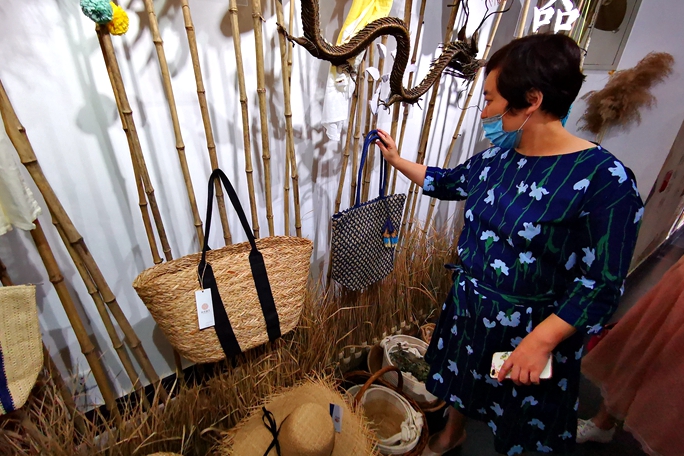Fish Lantern Festival sheds light on coastal culture
JINAN -- In the seashore village of Shanhouchujia in East China, thousands of residents prepared sacrifices and "fish lanterns," and danced their way to the pier to pray for fortune and safety for the lunar new year.
Fishermen around Yantai in Shandong province celebrate the Fish Lantern Festival on the 13th and 14th days of the lunar new year. On these two days, villagers gather at piers, dance, and light the "fish lanterns" in celebration, as their ancestors have done for hundreds of years.
The Fish Lantern Festival is a variation of the traditional Lantern Festival, which falls on Friday. Chinese make lanterns and eat glutinous rice balls, which represent reunion, on this day, the first full moon of a new lunar year.
In Shanhouchujia, Chu Naiyu's family began celebrating early on Wednesday. In the afternoon, the sacrifices were loaded on vans. Chu held colorful flags, while other men in the family beat gongs and drums. The motley crew of villagers were accompanied by dragon dancers, as well as tourists. The loud sounds of firecrackers added to the festivity.
According to local traditions, men, wearing red and white makeup and colorful costumes, hold flags and beat gongs and drums, while women and children wear red strings and dance on the way to the pier.
"We hope it will be a fruitful new year," said Chu, 55.
Historical records show that Shanhouchujia is near a natural port, where fishing boats often converged to shelter from storms and strong winds in the past.
To pray for safety, locals collected money to build a temple paying tribute to the Dragon King, the Chinese god of water and weather. During festivals, they visit the temple.
The Fish Lantern Festival has more than 500 years of history. It spread through villages along the coast around Yantai and was recognized on a national intangible cultural heritage list in 2008.
The festival has become so important that locals usually purchase sacrifices one week in advance.
"At the festival, every family has guests to entertain, and we prepare the best food for our family," said local fisherman Zhao Xingsheng.
After the dancing ceremony, Chu carried the sacrifices to his boat and the family began lighting lanterns.
"The sacrifices need to be very special," Chu said. "There should be a pig head with shoe-shaped ingots made of gold or silver paper in its mouth, a giant mackerel fish with a piece of papers showing the Chinese character Fu (blessing) placed on its body, in addition to steamed bums, fireworks, incense, and dishes."
But the most important thing is the fish lanterns, according to Chu.
"The 'fish lanterns' are candles made of a white turnip and a green radish, which represent a 'gold lantern' and a 'silver lantern,'" he said.
The flesh of the turnip and the radish is hollowed out, and wax is poured inside. Cotton is used as the wick.
"The candles are usually placed on the boat's bow, meaning they will light the way and bless the boat and the fishermen on it," Chu said.
These days, electric "fish lanterns" are gradually replacing traditional ones to protect the environment and for safety, he said.
After placing the lanterns, Chu and his family knelt on the deck and bowed in prayer for the brand new year.
"We pray for safety, good weather, and a harvest next year," they prayed.

 Shandong Culture and Tourism Consumption Season
Shandong Culture and Tourism Consumption Season Culture, tourism sectors pick up in Shandong as epidemic wanes
Culture, tourism sectors pick up in Shandong as epidemic wanes

